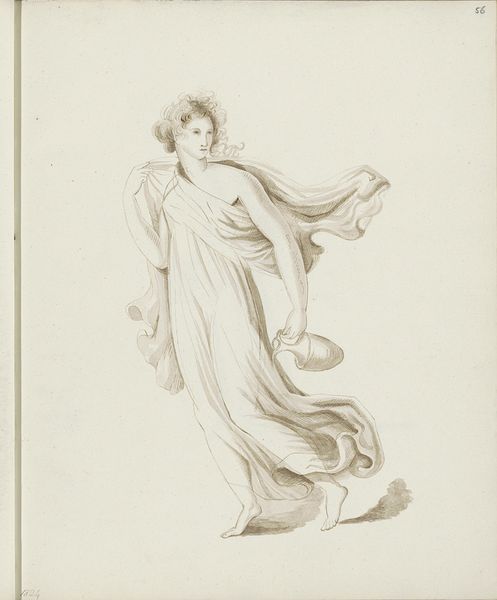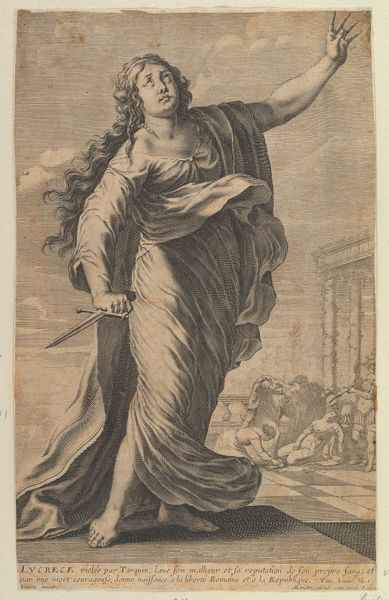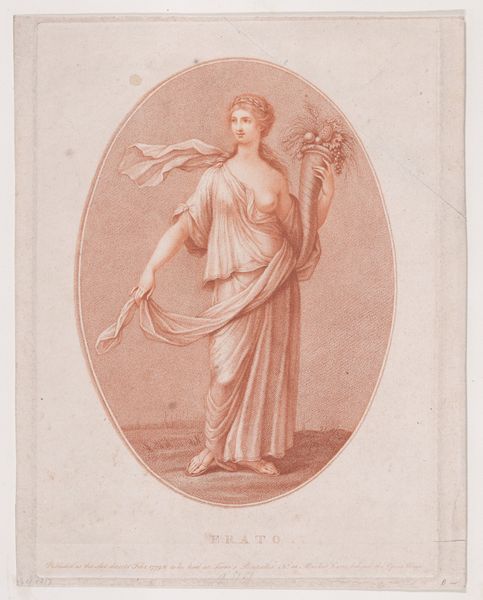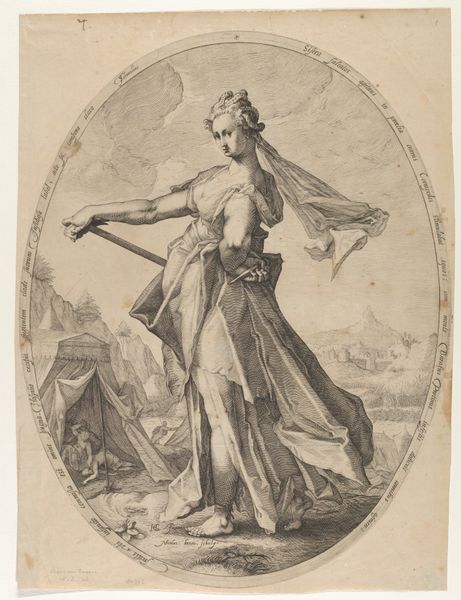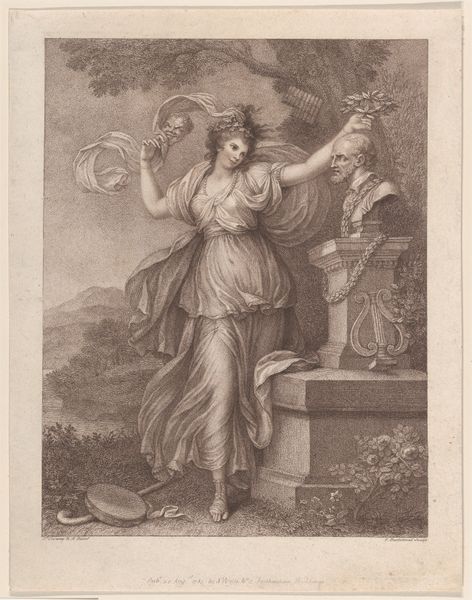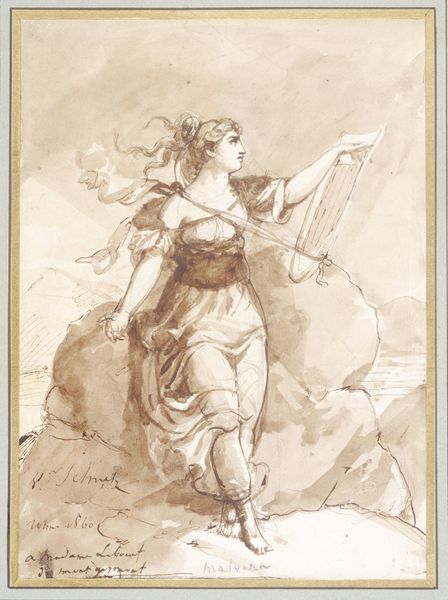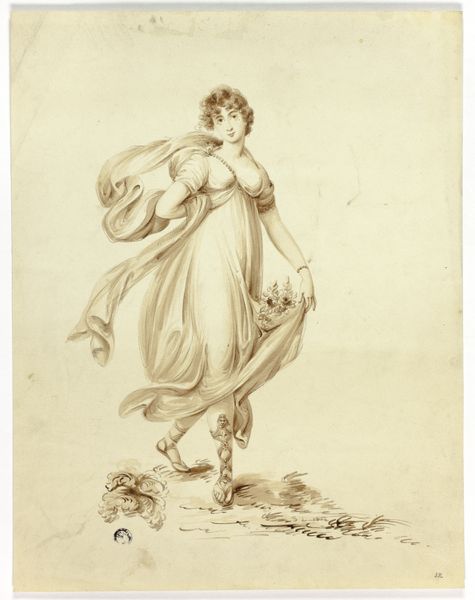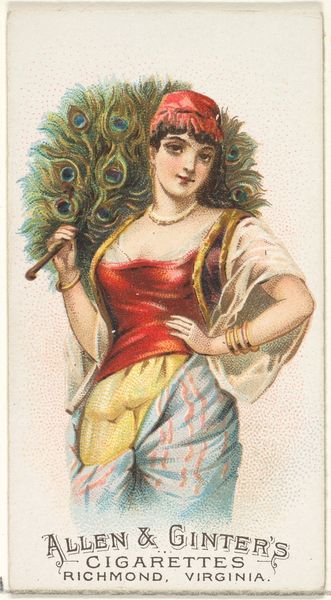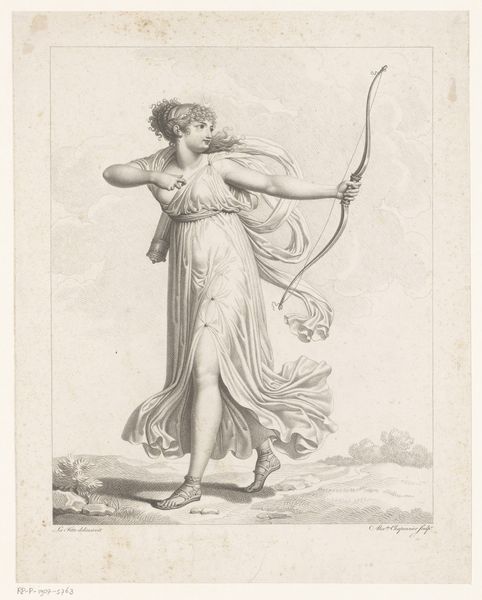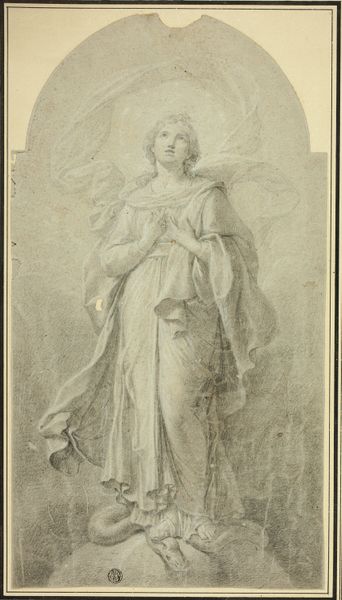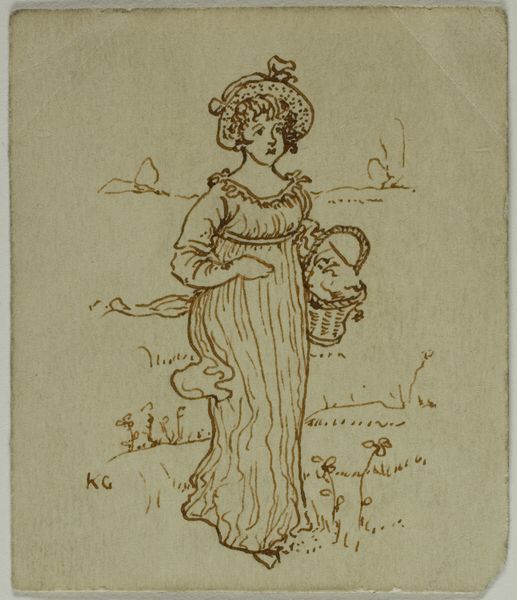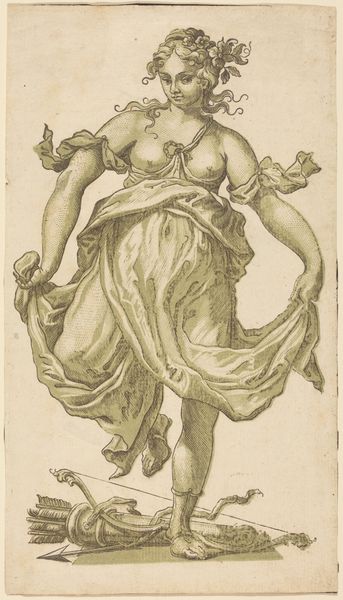
Woman floating in the sky, observed by a cherub 1800 - 1849
0:00
0:00
drawing, painting, watercolor
#
portrait
#
drawing
#
allegory
#
painting
#
landscape
#
figuration
#
watercolor
#
coloured pencil
#
romanticism
#
portrait drawing
#
watercolor
Dimensions: 200 mm (height) x 141 mm (width) (bladmaal)
Editor: Here we have a watercolour drawing by Peltro William Tomkins, from somewhere between 1800 and 1849, called "Woman floating in the sky, observed by a cherub". It's dreamlike. It looks like an angel ascending or a muse inspiring some sort of creation. I wonder how an image like this would function culturally at that time. What's your take on it? Curator: It’s fascinating to consider this drawing in the context of Romanticism, particularly its fascination with the ethereal and the idealised female form. Images of women, like this one, often served as allegories, representing abstract concepts like liberty, virtue, or inspiration, carefully constructed within social norms. Editor: So, the woman isn't just a woman, she represents something else? Curator: Precisely. Consider how the institution of art academies shaped artistic production then. They codified what was deemed "beautiful" and "appropriate". This work plays with these established notions, but also reinforces them by presenting a passively beautiful and seemingly docile figure. The presence of the cherub further elevates the scene, adding religious and artistic validation. Editor: That's really interesting. I hadn't considered the art academies' influence. Curator: Think about how such imagery reinforced societal expectations of women. How does the composition itself contribute to this idealization? Note how the woman is presented passively, floating rather than acting. What might that suggest about the roles women were expected to occupy at the time? Editor: I suppose she is floating and observing. The cherub is, too! They’re both in this heavenly space…So, the artwork tells us as much about art history as it tells us about history and social structure, right? Curator: Exactly! It encourages us to interrogate the social, cultural and political framework which shapes an image and which dictates how and where images are exhibited, then and now. Editor: This gives me so much to think about when looking at art of this period. Thank you for clarifying. Curator: My pleasure. The politics of imagery are endlessly fascinating.
Comments
No comments
Be the first to comment and join the conversation on the ultimate creative platform.

